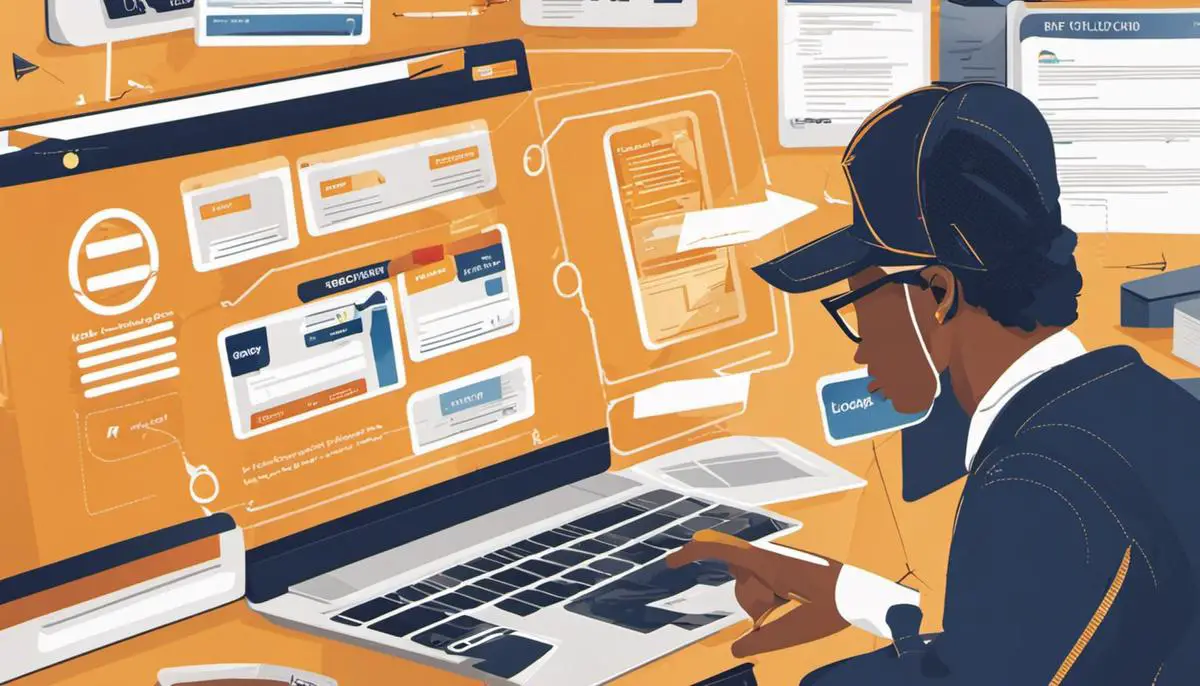In today’s digital world, managing your credit card account online is a crucial aspect of maintaining a clear view of your finances and promptly addressing any issues that may arise. This starts with a thorough understanding of your credit card company’s website, from the overall layout, where important information is stored, to the nitty-gritty details of the login panel.
Furthermore, having a broad knowledge of how to create and manage your login credentials safely, aspects like choosing strong passwords and knowing how to reset them, can go a long way in protecting your account from unauthorized access.
Understanding your Credit Card Company Website
Understanding your credit card company’s website:
The first step towards accessing your account online is to understand the layout and functions of your specific credit card company’s website. Knowing how to navigate the credit card login online is key for success. A majority of these websites offer a login or sign-in button prominently displayed on their homepage. This button may be located in the top right corner or in the center of the page.
Use Familiarity to Navigate the Interface:
Once you locate the login button, hover over it or click on it to open an access box where you can input your username and password. If you’re new to the credit card company’s website, look for a sign-up or register button. You typically need to provide personal identifying information like your name, credit card number, and Social Security number.
Check for Information Tabs and Panels:
When you’ve logged in to your account, observe and familiarize yourself with the layout. Look for tabs or panels that host different kinds of information. Your credit card company usually details your available credit, minimum payment due, and pending transactions under different sections.
Accessing Personal Account Details:
Your personal account details could be located under a tab labeled as ‘Account Details,’ ‘My Account,’ or something similar, usually. This tab generally provides a detailed snapshot of your credit card activity. Information about your spending, payment history, credit limit, and cash advances are typically found here.
Security Settings and Features:
Also worth noting is the settings or profile section, which controls your personal information and security settings. Here, you most likely can change your password, set up multi-factor authentication, and update your contact information.
The website’s layout differs between companies, and as such, navigation will have subtle variances. Hence, it’s of utmost importance to familiarize yourself with the credit card provider’s online portal to make the best of its services.

Creating and Managing Login Credentials
Establishing Your Username and Password
Establishing a username and password is the first step in setting up your credit card company login. After obtaining your credit card, go to your card issuer’s website, search for a “register” or “enroll” option. Typically, you’ll be asked to provide details including your card number, name on the card, security code, and possibly some additional identification information like your Social Security number or date of birth. After the system verifies your information, you can proceed to create a username and password.
Creating Strong, Unique Passwords
It is essential to create strong, unique passwords. A strong password usually includes a combination of letters, numbers, and symbols. It’s best to avoid commonly used words or personal information that someone might guess or easily retrieve. Passwords should be unique to each online account. Using the same password for multiple accounts can leave you vulnerable if one of your accounts is compromised.
Managing and Safeguarding Login Credentials
Maintaining the security of your login credentials involves regular updates and careful storage. It is recommended to update your passwords every three to six months and avoid reusing old passwords. Don’t jot down these credentials on easily accessible areas like post-it notes. Instead, consider a password manager: a secure application that can store and encrypt all your passwords.
Resetting Your Credentials If Forgotten
In case you forget your login credentials, do not worry. Most credit card company websites have a “Forgot your username/password?” link on the login page. By clicking this link and providing the required identification information, you can reset your username or password. Some companies might send a verification email or text message with a temporary password or a reset link.
Security Measures: Security Questions and Two-Factor Authentication
Security Questions and two-factor authentication add an additional layer of protection to your account. Security questions are personal questions that only you know the answers to. They can be used for identity verification during the login process or password reset.
Two-factor authentication, on the other hand, involves tying your account login to an additional verification method, such as a mobile device. Following entering your password, the system prompts you to enter a code sent to your mobile device. This feature ensures that even if someone else obtains your password, they can’t access your account without the verification code.

Troubleshooting Login Issues
Common Login Issues
When attempting to login to your credit card company’s website, there are several common issues that may prevent a successful login attempt. These include entering an incorrect username or password, having your account locked due to multiple unsuccessful login attempts, or the site undergoing maintenance.
Incorrect Password or Username
If you can’t login due to an incorrect password or username, the first step is to verify that you’ve entered the correct information. Make sure your Caps Lock is off, as passwords are often case-sensitive. If you have forgotten your username or password, most sites offer a “Forgot your username or password?” link on the login screen. Click on this and follow the prompts to retrieve your username or reset your password through your recovery email address or phone number.
Account Locked: Multiple Unsuccessful Login Attempts
If your account has been locked due to multiple unsuccessful login attempts, it’s a security measure put in place to protect your data. Depending on the company’s policy, your account may automatically unlock after a certain amount of time. In other cases, you may have to contact customer service to unlock your account. When contacting customer service, have your account information handy and be prepared to answer some security questions to confirm your identity.
Site Maintenance
From time to time, credit card company sites may undergo maintenance, during which you may not be able to log in. If you suspect this might be the case, look for an announcement or notification on the company’s homepage or try to log in again after some time.
Contacting Customer Service
If you’re unable to resolve the issue on your own, you’ll need to contact the company’s customer service department for further assistance. Before calling, make sure you have all necessary information, such as your account number, social security number, and answers to any potential security questions. It may also be beneficial to explain clearly the steps you’ve already taken to resolve the issue.
Resetting Your Password
In most cases, you should be able to reset your password by clicking on the “Forgot your password?” link on the login screen. You will typically need to enter your username or associated email address, and then follow the instructions sent to your email to create a new password. Always remember to create a strong, unique password to keep your account secure.

Photo by markusspiske on Unsplash
Lastly, the digital age doesn’t come without its complexities. There are instances when you might struggle with logging into your account due to a range of issues. Being able to identify common login problems, like incorrect username or password, account lock after several unsuccessful attempts, or the site going under maintenance, equips you with the necessary tools to troubleshoot and quickly resolve these challenges. This not only ensures uninterrupted access to your account but also fosters a stress-free experience when managing your credit card finances online.




